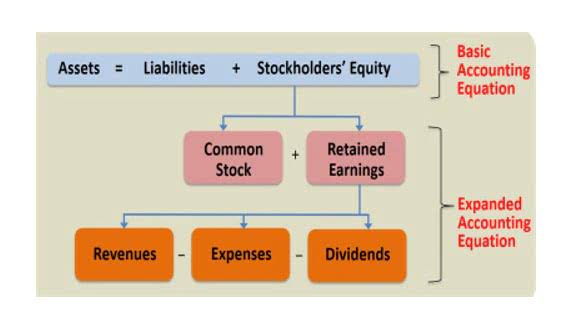
Determining the transaction price can become complicated when you consider variable consideration—such as performance bonuses, unpriced or unsigned change orders, claims, and liquidated damages—and noncash consideration. Contractors under the new threshold can choose to switch back to their previous exempt method, which could include the cash method, completed contract method, accrual method, or accrual excluding retentions, or elect to move to another permissible method not previously used. Each method offers unique ways to recognize revenue at different times and provide for deferral opportunities.
Industry Insights
This is, of course, a complicated determination, but the contractor in this case weighs the many relevant factors and determines there is an 80 percent chance of the work being completed by January 1, 2018. Since there are only two possible outcomes (the transaction price will be either $10 million or $10.5 million), the performance bonus is an example of variable consideration that has a binary result, and the first method—choosing the most likely amount of the transaction—is more appropriate. Leases, financial instruments, insurance contracts, and nonmonetary exchanges are not impacted. Construction contractors in particular will find that the standards require some major rethinking by their accounting functions and the significant application of judgment.
- We will then best match our solution to your particular situation and evolve with you.
- Implement systems that provide comprehensive, real-time views of your business to help illuminate data so you can make decisions informed by actual data over instinct or opinion.
- Outsourcing some or all of your finance and accounting functions—from CFO down through bookkeeper—can give you access to a wider range of skill sets, knowledge, and a deeper bench.
- Entities that choose the modified retrospective approach are required to make a cumulative effect adjustment and disclose the effects of adopting the new standards on each financial statement line item as of the beginning of the period of adoption.
Business Transition Webcast Series
It would not, for example, be appropriate to measure progress by including the costs incurred for uninstalled materials purchased at the outset of a project (see the section on uninstalled materials, below, for more detail) or the costs resulting from inefficiencies and rework that were not considered when pricing the contract. Recognizing revenue earlier or later than you otherwise would have under existing GAAP could impact your financial performance metrics, financing, and tax planning, so you’ll want to get ahead of the changes now if you hope to have control over the possible effects. Additionally, if you’re now entering into contracts that may extend two to three years, you’ll want to be cognizant of how the new revenue recognition standards could impact those contracts, and you may want to make modifications to them before they are finalized. If the contractor provides the customer with the option of purchasing the warranty separately, the warranty should be treated as a distinct performance obligation, and a portion of the transaction price would be allocated to it.

Step 5: Recognize the Revenue

Certain challenges consistently burden construction companies—the razor thin margins, the seasonality, the need to aggressively manage cash flow—but staying competitive in a transforming industry requires proactive solutions that address more than just simple tax and accounting needs. Whether you’re looking to outsource your entire finance and accounting function, augment your existing team, or transform your current approach, we can help. Our team will get to know your key goals and will personally help you implement the shared vision we create together. Contractors utilizing one of the allowed methods need to work with their consultants to determine planning opportunities. Once over the threshold, there are many variations of the percentage-of-completion method that contractors can use depending on what type of work they do and the duration of their contracts.

- To bring you valuable data and analysis that helps benchmark your company against competition—so you can make informed decisions about everything from salaries to inventory.
- These costs are then amortized on a basis consistent with the transfer of the goods or services to which the capitalized amounts relate, and the unamortized costs are evaluated for impairment.
- Testing your current systems, or implementing new ones, can help evaluate your safety levels and identify controls you need for further preventive measures.
- Contractors utilizing one of the allowed methods need to work with their consultants to determine planning opportunities.
- Setting rates or establishing caps for equipment inventory can help monitor cost accumulation and keep projects on budget.
We help you determine the key drivers of your business, then develop reporting systems to present those key performance indicators (KPIs) in an actionable way. Using our experience and industry expertise, we help derive meaning from the financial information to help guide you and implement any changes needed. We can outsource all or most of your finance and accounting functions, so you can focus more on your business and less on your back office.

To bring you valuable data and analysis that helps benchmark your company against competition—so you can make informed decisions about everything from salaries to inventory. Implement systems that provide comprehensive, real-time views of your business to help illuminate data so you can make decisions informed by actual data over instinct or opinion. Whether you’re looking for a comprehensive solution, adding to your existing capacity, or just need some extra help now and then, our team approach provides the flexibility, scalability, and backup you QuickBooks can’t get from your existing resources.
The material appearing in this communication is for informational purposes only and should not be construed as legal, accounting, tax, or investment advice or opinion provided by Moss Adams LLP or its affiliates. This information is not intended to create, and receipt does not constitute, a legal relationship, including, but not limited to, an accountant-client relationship. Although these materials have been prepared by professionals, the user should not substitute these materials for professional services, and should seek advice from an independent advisor before acting on any information presented. Moss Adams LLP and its affiliates assume no obligation to provide notification of changes in tax laws construction bookkeeping services or other factors that could affect the information provided.
Outsourcing some or all of your finance and accounting functions—from CFO down through bookkeeper—can give you access to a wider range Law Firm Accounts Receivable Management of skill sets, knowledge, and a deeper bench. Your needs are likely to change over time, and it can be challenging to meet those changing needs with your existing resources. Public companies will need to comply with the new standard starting with annual reporting periods beginning after December 15, 2016, and nonpublic companies will need to comply starting with annual reporting periods beginning after December 15, 2017. Nonpublic companies may choose to adopt the new standard early, but no earlier than the date for public company compliance. For more information about the cash method of accounting, contact your Moss Adams professional.